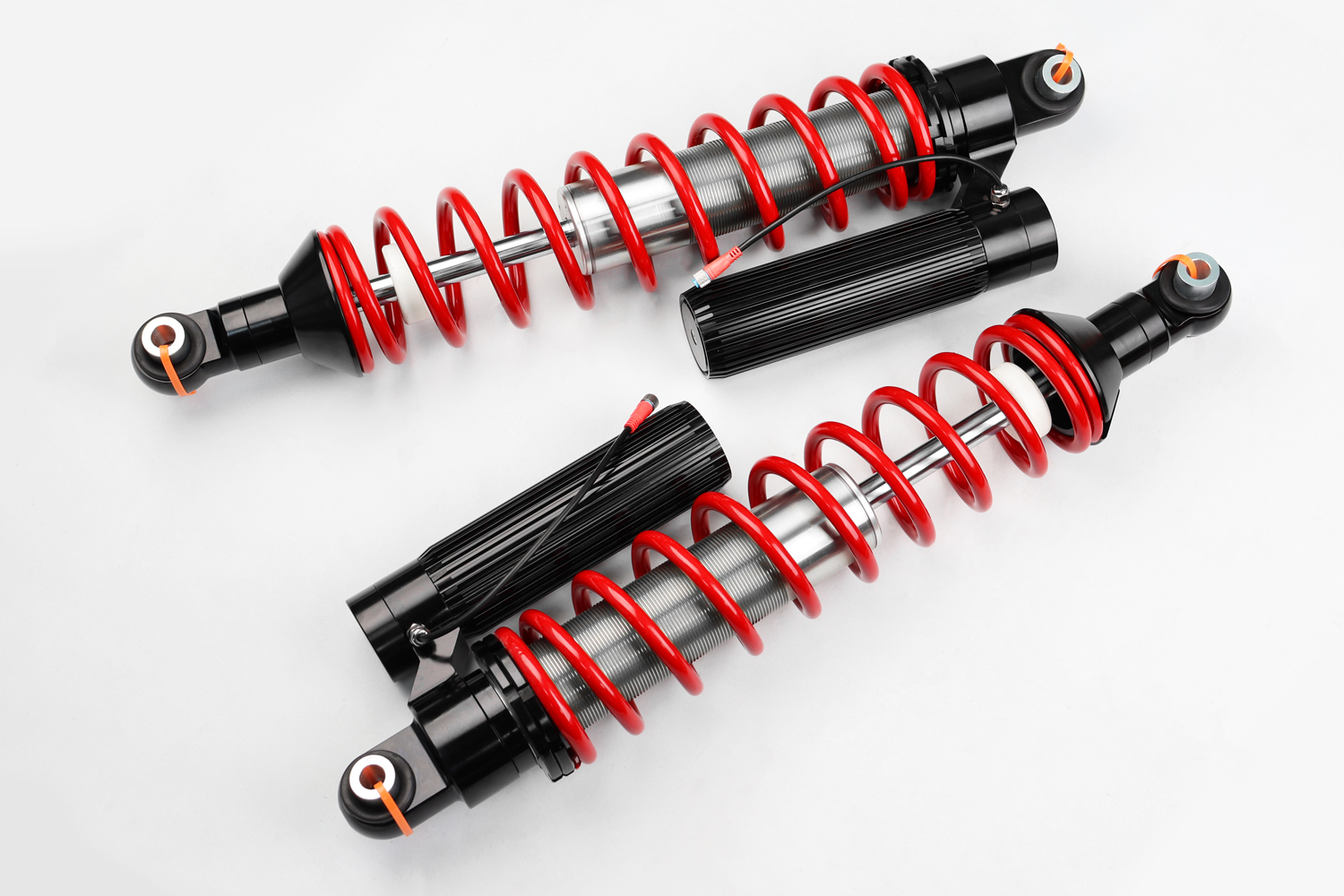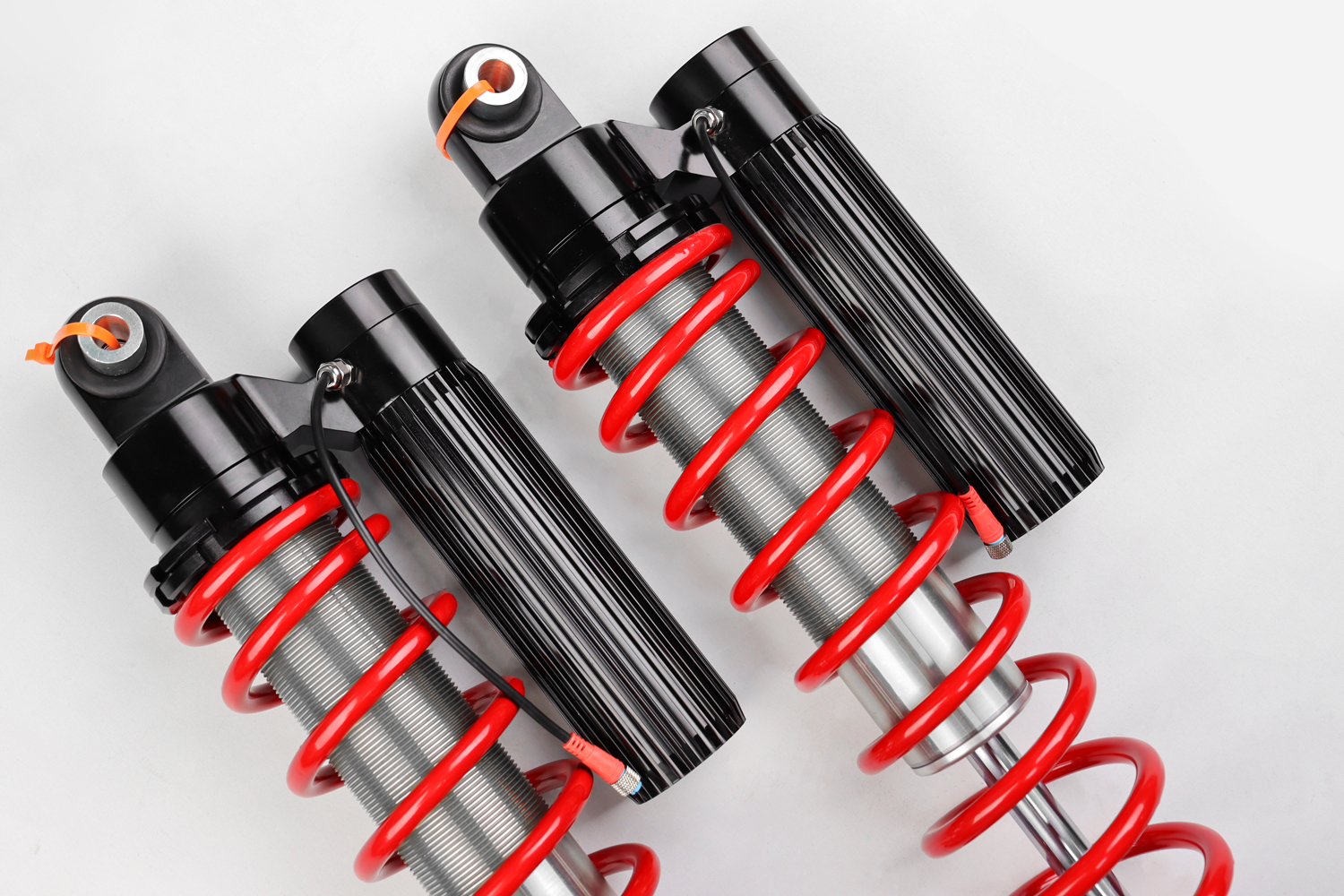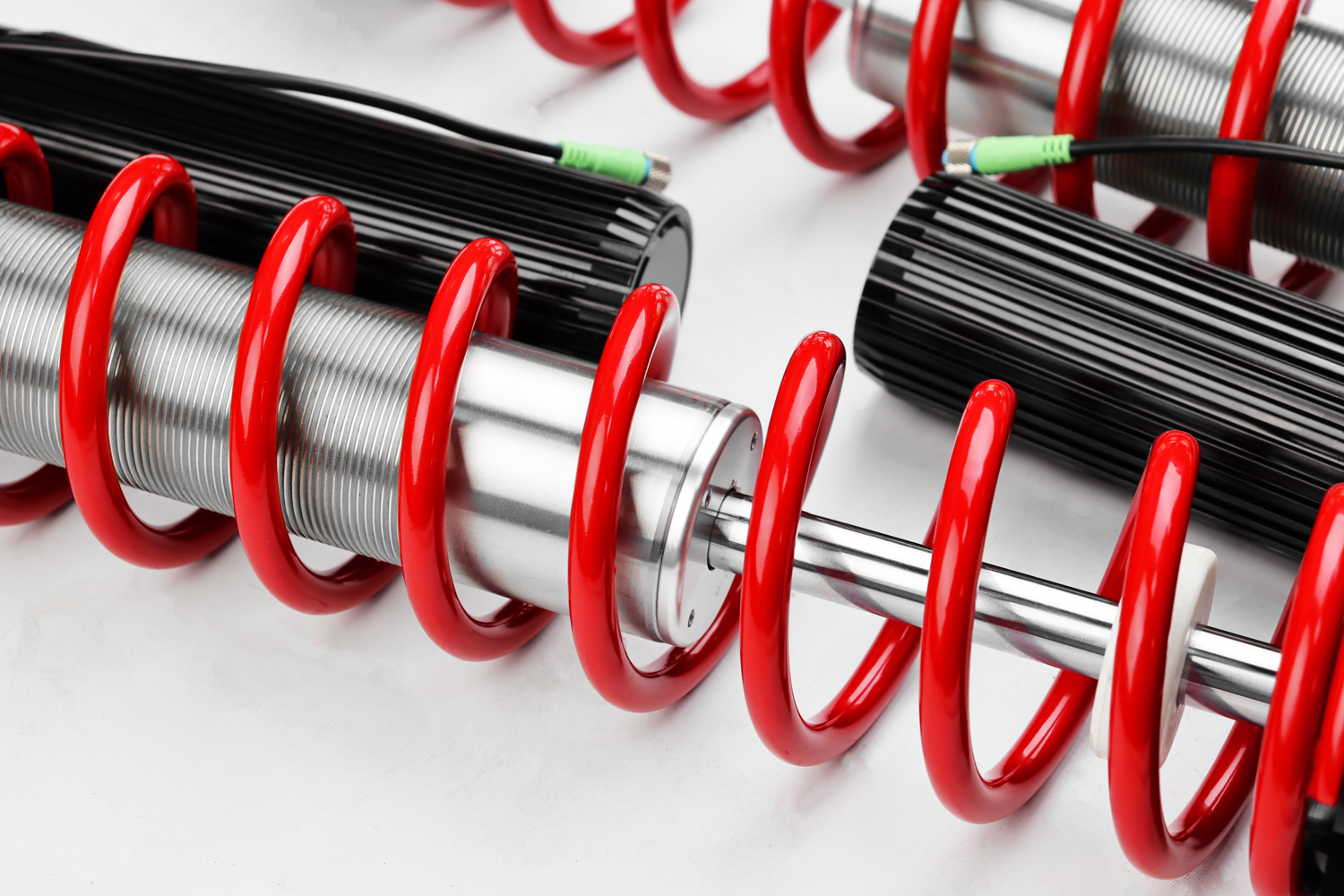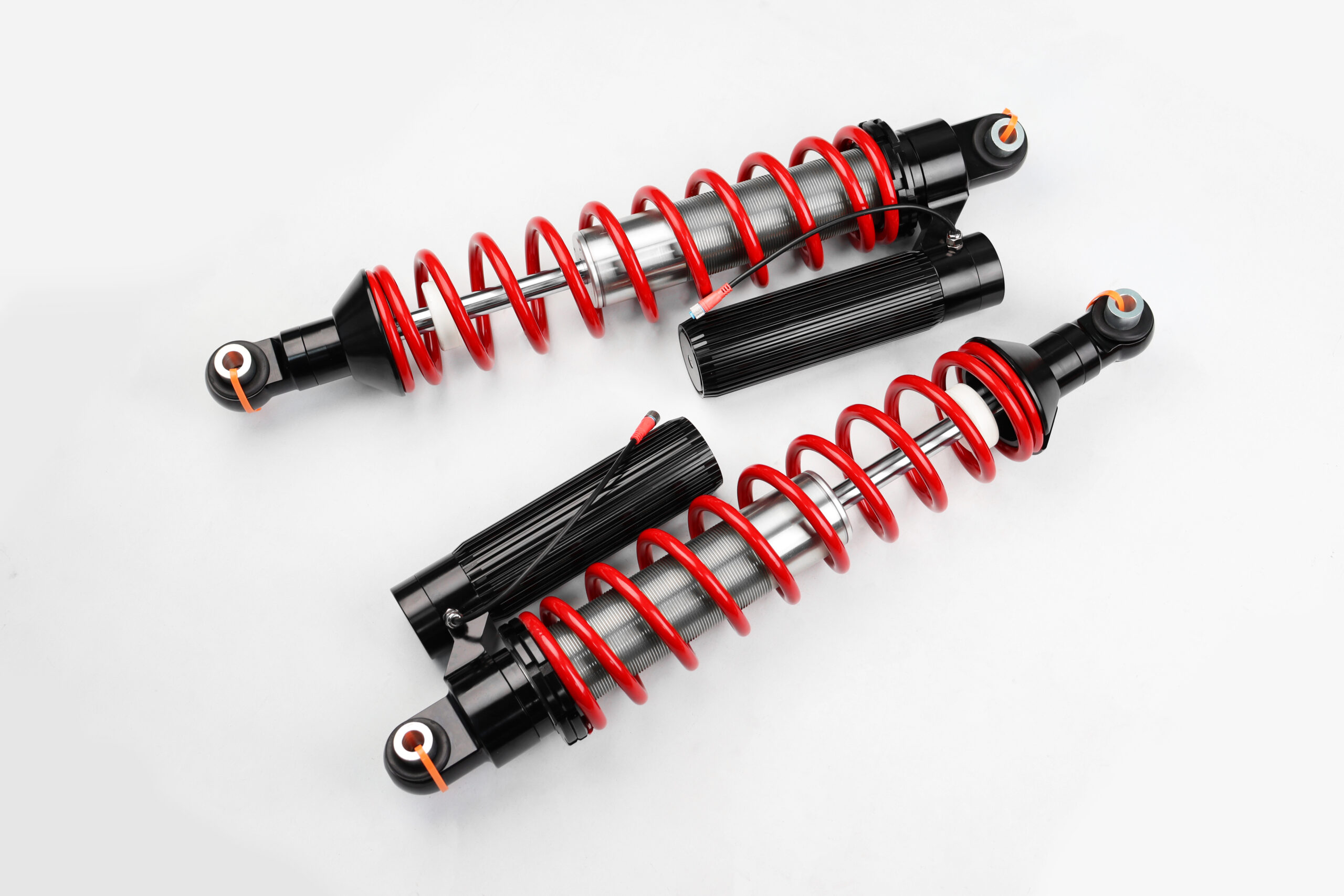How to Test Shock Absorber Damping Force: A Complete Guide for B2B Buyers
August 24, 2025
Share This Article
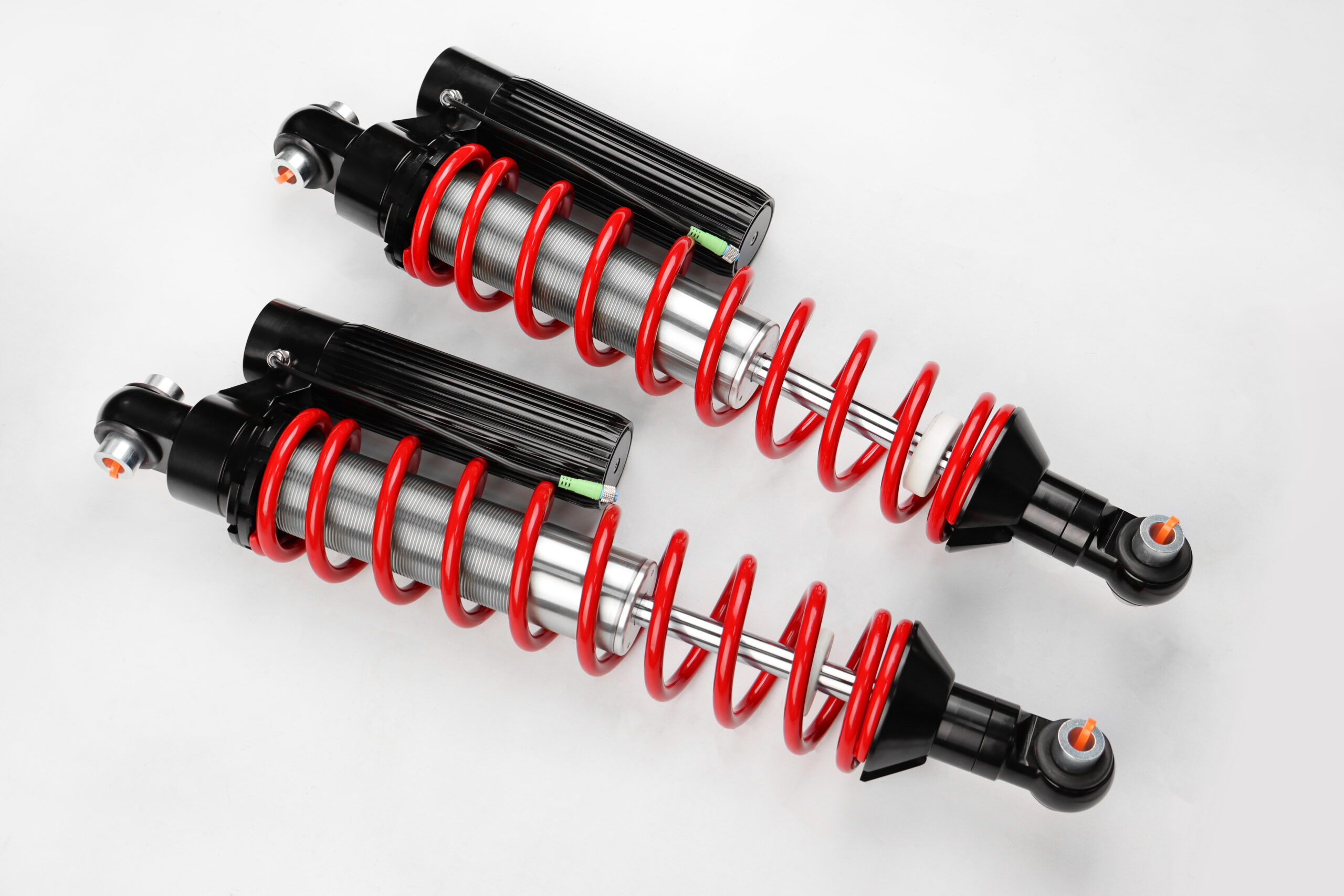
What Is Shock Absorber Damping Force?
Damping force is the resistance a shock absorber provides against motion when a vehicle encounters a bump or uneven terrain. It’s a critical parameter that defines the shock absorber’s performance, especially in off-road and racing applications.
Technical Definition
The damping force is generated by the hydraulic resistance inside the shock absorber as oil flows through internal valves and orifices. It controls:
- Compression: The force when the shock absorber is pushed inward.
- Rebound: The force when the shock absorber extends back outward.
Why Is Damping Force Important?
For B2B buyers like auto parts distributors, racing teams, or modified vehicle builders, understanding damping force is essential for:
- Ensuring vehicle stability and safety
- Matching suspension behavior to vehicle weight and terrain
- Reducing wear and improving tire grip
- Enhancing comfort in RVs and off-road applications
Key B2B Keywords to Keep in Mind
| Keyword | Intent |
|---|---|
| shock absorber damping test | Informational, Technical |
| shock absorber supplier | Commercial, B2B |
| performance shock absorber wholesale | Transactional |
| off-road suspension parts distributor | Transactional |
| adjustable damping shock absorber | Informational/Commercial |
Why Damping Force Matters for Off-Road and Racing Applications
Damping force plays a central role in defining how vehicles behave under extreme conditions. In off-road and racing scenarios, the suspension system faces high loads, rapid compression/rebound cycles, and unpredictable terrain.
Applications Requiring Specific Damping Characteristics
| Vehicle Type | Damping Requirement | Reason |
|---|---|---|
| Off-road SUVs | High rebound force | To maintain wheel contact over rough terrain |
| Rally cars | Adjustable compression | For terrain flexibility: gravel, tarmac, sand |
| RVs | Balanced damping | For comfort, weight distribution, and long travel |
| Baja trucks | Extreme high-speed damping | Absorbing large impacts at high speed |
Damping Force in Competitive Racing
- Consistency: It ensures predictable handling lap after lap.
- Tire Contact: Helps maintain traction, reducing tire wear.
- Driver Confidence: Improved feedback and control.
G·SAI shock absorbers are engineered with precision damping control, ideal for off-road racing and customized vehicle applications. With over 17 years of R&D experience, we tailor damping profiles to specific vehicle needs. Learn more about G·SAI’s custom damping solutions.
Key Methods to Test Shock Absorber Damping Force
There are multiple methods used in the automotive industry to test shock absorber damping force. These range from manual testing to highly precise computerized testing systems.
1. Damper Dynamometer (Shock Dyno) Testing
This is the most common and accurate lab-based method.
How It Works:
- The shock absorber is mounted on a machine.
- The dyno cycles it at various speeds.
- Force vs velocity curves are recorded.
Data Output:
- Compression and rebound force graphs
- Peak force measurements
- Hysteresis curves
| Test Type | Description | Common Use |
|---|---|---|
| Sinusoidal Test | Constant-speed stroke | Basic performance mapping |
| Step Test | Rapid compression/rebound | Racing applications |
| Frequency Sweep | Varying speeds | Comfort and vibration analysis |
2. Vehicle-Based Testing
Used for real-world validation.
- Shock absorbers are installed on test vehicles.
- Sensors measure suspension displacement and force.
- Data is collected during driving over different terrains.
This method is useful for:
- RV manufacturers
- OEM shock absorber suppliers
- Custom off-road builders
3. Manual Push/Pull Inspection
A basic method but not precise enough for professional use. It involves:
- Compressing the shock manually
- Feeling resistance on compression and rebound
Used only for:
- Preliminary checks
- Field inspections
For high-precision damping tests, G·SAI uses advanced damper dynamometers in our simulation lab and CNC-equipped factory. This allows us to deliver consistent quality for OEM and modified vehicle clients.

Comparing Laboratory vs Real-World Damping Force Testing
When it comes to testing the damping force of a shock absorber, both lab and real-world tests have unique advantages. For B2B clients such as auto part wholesalers, brand manufacturers, and racing teams, understanding both is essential for product evaluation and selection.
Laboratory Testing: Controlled, Precise, Repeatable
Pros:
- Controlled test environment
- Repeatable test cycles
- Measurable force-velocity graphs
- Fast turnaround for R&D
Cons:
- Does not account for all real-world variables
- Limited to machine-generated inputs
Real-World Testing: Practical, Application-Specific
Pros:
- Evaluates shocks under actual load
- Takes into account weight, terrain, and vehicle dynamics
- Detects noise, fade, and heating issues
Cons:
- Harder to control variables
- Requires data logging and sensors
- More time-consuming and costly
Combined Approach: Best for Premium Buyers
| Test Method | Ideal For | Common Tools |
|---|---|---|
| Lab Testing | OEMs, R&D teams | Shock dyno, sensors |
| Real-World | Racing teams, Builders | Data acquisition systems |
| Hybrid | Premium brands | Both environments |
G·SAI combines both testing approaches to ensure our products meet real-world durability and lab-tested performance standards. We support wholesale clients with custom tuning based on test data. Connect with us to discuss your testing requirements.
How to Choose the Right Shock Absorber Based on Damping Profiles
Choosing the right shock absorber is not just about fitment—it’s about matching the damping force profile to the application. This is especially important for B2B buyers in wholesale, OEM, and motorsport industries.
Key Damping Force Parameters to Consider
- Force-Velocity Curve: Shows how force changes with shaft speed.
- Compression vs Rebound Ratio: Determines balance and comfort.
- Damping Coefficient (Cd): A numeric representation of damping performance.
Damping Profiles by Application
| Application | Recommended Profile | Notes |
|---|---|---|
| Racing | High rebound, adjustable compression | For traction and control |
| Off-road | High compression, progressive rebound | To absorb large impacts |
| RVs | Medium damping, comfort-tuned | For smooth ride and load handling |
| Modified Cars | Custom damping curves | Tuned to weight, tires, use-case |
Shock Absorber Types by Damping Control
- Twin-Tube Shocks: Cost-effective, good for general use.
- Mono-Tube Shocks: Better heat dissipation, consistent damping.
- Adjustable Shocks: Allow tuning of compression/rebound separately.
G·SAI offers all three types with custom damping profiles, designed to match different vehicle dynamics. We provide tailored solutions for bulk orders and OEM manufacturing. Start your wholesale journey here.
Custom Damping Force Solutions for Racing and Modified Vehicles
For high-performance vehicles, one-size-fits-all shock absorbers are rarely optimal. Custom damping force tuning is essential for:
- Competitive motorsport teams
- Modified vehicle builders
- Specialty vehicle manufacturers (e.g., overland RVs)
What Customization Includes
- Valve tuning (digressive, linear, progressive)
- Shim stack configuration
- Oil viscosity adjustments
- Gas pressure settings
Benefits of Custom Damping Solutions
- Optimized traction and control
- Minimized chassis oscillation
- Extended shock lifespan under race conditions
- Enhanced driver confidence and safety
At G·SAI, our chief engineer Cai Xianyun leads custom development with 17 years of experience in racing shock absorber R&D. Whether you’re preparing for Baja races or building high-end off-road vehicles, we deliver tailored damping solutions. Explore our custom product offerings.
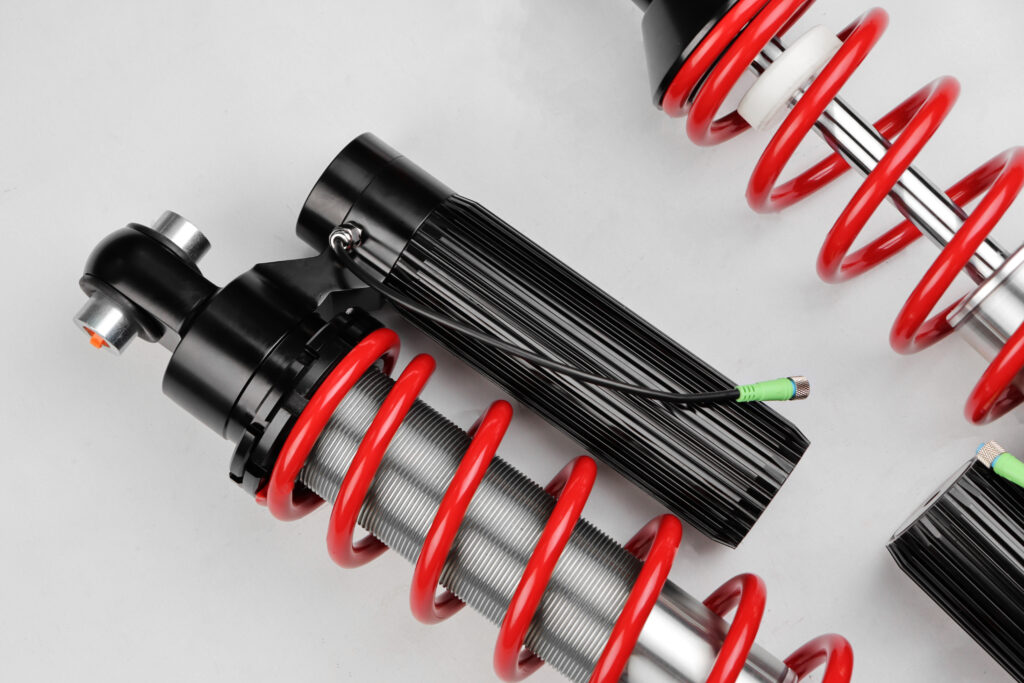
Top Damping Force Testing Equipment for Shock Absorber Manufacturers
Manufacturers and B2B distributors must ensure that the shock absorbers they source are tested with professional-grade equipment.
Recommended Equipment
| Equipment | Purpose | Brand Examples |
|---|---|---|
| Damper Dynamometer | Force-velocity curves | Roehrig, K&C |
| Servo-Hydraulic Actuators | Real-time dynamic testing | MTS Systems |
| Data Acquisition System | Real-time telemetry | MoTeC, RaceLogic |
| Thermal Test Chambers | Heat fade analysis | Thermotron |
What to Look for in a Manufacturer
- In-house shock dyno testing
- Simulation lab for dynamic loads
- CNC machining precision
- Customizable parameters
G·SAI’s factory includes state-of-the-art CNC machining and real-vehicle simulation labs, ensuring that every shock absorber is tested and tuned to perfection. Discover our manufacturing capabilities.
Best Practices for Wholesale Buyers Sourcing High-Performance Dampers
If you’re a B2B buyer, wholesaler, or auto brand looking to source high-performance shock absorbers, here are key tips to ensure quality and performance.
Sourcing Checklist
✅ Request damping force test data (force-velocity curve)
✅ Ask about the testing equipment used
✅ Inquire about real-world validation processes
✅ Ensure compliance with international quality standards
✅ Look for custom tuning options for different vehicle platforms
Ideal Wholesale Buyer Partnerships
- Racing teams seeking consistent tuning
- Auto part resellers looking for premium products
- RV builders needing comfort-optimized suspensions
- Off-road vehicle OEMs requiring rugged performance
G·SAI is a trusted wholesale partner for premium shock absorbers, offering custom solutions, B2B pricing tiers, and one-on-one technical support. Apply to become a G·SAI distributor.
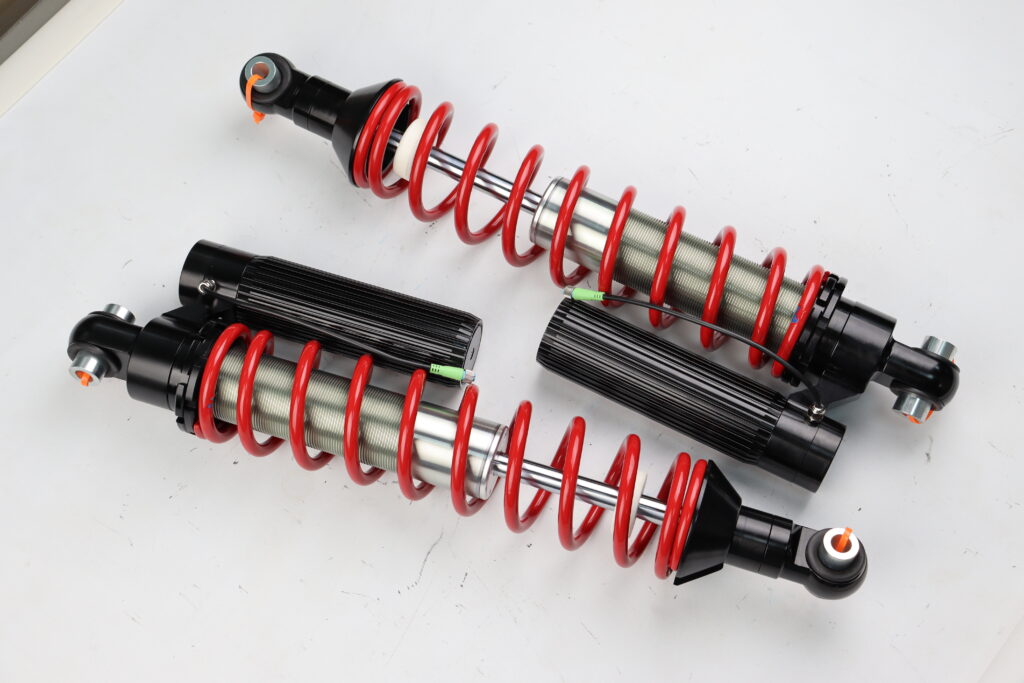
FAQ: Shock Absorber Damping Force Testing for B2B Buyers
Q1: How do I know if a shock absorber has the right damping force?
A: Review the force-velocity curve and compare it to your vehicle’s weight and use-case. For racing or off-road, custom tuning is often necessary.
Q2: Can I adjust the damping force after purchase?
A: Yes, if you’re using adjustable or rebuildable shocks. G·SAI offers adjustable models for both compression and rebound.
Q3: Does G·SAI provide damping test reports with bulk orders?
A: Yes, we provide detailed test data and support for OEM and wholesale clients upon request.
Q4: What’s the difference between rebound and compression damping?
A: Compression controls the shock’s inward movement; rebound controls its extension. Both are critical for ride quality and control.
Q5: How can I start sourcing custom shocks from G·SAI?
A: Simply contact our team or apply through our dealer network to discuss your vehicle requirements and order volume.
By understanding how to test and interpret shock absorber damping force, B2B buyers can make informed decisions that maximize performance, safety, and customer satisfaction. Whether you’re outfitting a racing fleet or developing custom vehicles, G·SAI offers the expertise, equipment, and engineering to deliver world-class suspension solutions.
How to Assemble Shock Absorbers for Accurate Damping Force Performance
Assembling a high-performance shock absorber requires more than just putting parts together—it requires precise calibration to ensure the damping force is consistent, reliable, and tailored for specific applications. For B2B buyers such as off-road racing teams, RV manufacturers, and aftermarket suspension distributors, understanding the assembly process is essential for evaluating product quality and performance.
Key Components of a Shock Absorber
Before diving into the assembly process, it’s important to understand the core components that influence damping force:
| Component | Function |
|---|---|
| Piston Rod | Connects to the vehicle and transfers motion to the internal valve |
| Piston Valve | Controls oil flow and determines damping characteristics |
| Shim Stack | Fine-tunes rebound and compression resistance |
| Oil Reservoir | Holds hydraulic fluid for consistent pressure |
| Gas Chamber | Pressurized nitrogen to prevent cavitation |
| Seal Head | Maintains oil and gas separation, prevents leakage |
Assembly Process Step-by-Step
1. Precision Machining of Components
- All internal parts such as pistons, shims, and rods must be CNC-machined to tight tolerances.
- Surface finishes are polished to reduce friction and wear.
At G·SAI, our CNC machining workshop ensures micron-level accuracy for all custom shock absorber components.
2. Valve Tuning and Shim Stack Configuration
- Engineers determine the valve design (linear, digressive, progressive) based on the application.
- Shim stacks are layered to control oil flow through the piston.
Example Shim Stack Tuning:
| Application | Compression Stack | Rebound Stack |
|---|---|---|
| Racing | Medium shims + digressive | Thick shims + linear |
| Off-road | Progressive shims | Soft rebound shim stack |
| RV Comfort | Soft compression | Medium rebound |
3. Assembly in Controlled Environment
- All parts are cleaned in an ultrasonic bath.
- Assembly is done in a dust-free, temperature-controlled zone to prevent contamination.
- Oil is filled in a vacuum chamber to eliminate air bubbles.
4. Gas Charging
- Nitrogen is charged into the reservoir at specified pressures (commonly 100–300 psi).
- This step prevents foaming and ensures consistent damping force during continuous use.
5. Initial Bench Testing
- After assembly, each shock is tested on a low-speed dyno to verify base damping characteristics.
- Any deviations are corrected before packaging.
G·SAI uses precision assembly techniques and simulated vehicle testing to ensure every shock absorber delivers the exact damping profile designed for its application. Explore our shock absorber production process.
How to Choose the Right Shock Absorber Based on Damping Force
Selecting the ideal shock absorber for your vehicle or product line isn’t just about fitment—it’s about tuning. For B2B buyers, making the right choice means better performance, fewer returns, and higher customer satisfaction.
1. Match Use Case with Damping Profile
Start by analyzing the vehicle type, terrain, and performance expectations.
| Use Case | Ideal Damping Profile |
|---|---|
| Off-road trail | High compression, medium rebound |
| Desert racing | Progressive compression, firm rebound |
| Overlanding RV | Comfort-tuned, soft rebound |
| Modified sports car | Balanced damping, adjustable rebound |
2. Consider Adjustable vs Fixed Damping
- Adjustable Shocks: Allow tuning of compression and rebound via knobs or valves. Preferred for racing teams and high-end builders.
- Fixed Shocks: Pre-set damping, best for standard use and fleet applications.
3. Choose the Right Shock Type
| Shock Type | Damping Control | Best Use |
|---|---|---|
| Twin-tube | Basic damping, cost-effective | OEM replacements |
| Mono-tube | Better heat dissipation and damping precision | Performance applications |
| Remote Reservoir | Extended fluid capacity, consistent damping | Off-road and racing |
| Electronic Adjustable | On-the-fly damping changes | Luxury vehicles, advanced builds |
G·SAI offers a full range of mono-tube, twin-tube, and remote reservoir shock absorbers with custom damping options. View our full shock absorber catalog.
4. Evaluate Load Capacity and Suspension Geometry
- Heavier vehicles require firmer damping to prevent bottoming out.
- Long-arm suspensions in off-road builds benefit from progressive damping curves.
- Multi-link setups may require multi-stage valving for comfort and control.
5. Use Data to Drive Decisions
If you’re sourcing in bulk, request the following from manufacturers:
- Force-velocity graphs
- Heat fade resistance test results
- Real-world testing data on specific terrains
- Mounting options and compatibility sheets
Custom Shock Absorber Solutions: What B2B Buyers Need to Know
For racing teams, vehicle upfitters, and aftermarket brands, off-the-shelf shock absorbers often fall short. Custom damping solutions are essential to meet performance demands and brand differentiation.
What Can Be Customized?
- Damping Force Curve
- Linear, digressive, or progressive response
- Separate tuning for compression and rebound
- Mounting Options
- Eye-to-eye, stud, clevis, or spherical bearings
- Custom lengths and stroke travel
- Material Choices
- Aluminum for light weight
- Steel for durability
- Anodized or powder-coated finishes
- Reservoir Configuration
- Internal vs. external
- Piggyback vs. remote
- Adjustability Features
- Manual knobs (1-way, 2-way, 4-way)
- Electronic remote control options
Industries Benefiting from Custom Damping
- Off-Road Racing Teams: Require terrain-specific tuning and rebuildable designs
- RV Manufacturers: Need comfort and load-optimized suspension
- Vehicle Modifiers & Tuners: Offer branded performance solutions
- Fleet Managers: Optimize for lifespan and consistent ride for heavy-duty use
G·SAI specializes in custom shock absorber development for commercial and racing applications. With in-house engineering, real-world testing, and rapid prototyping, we help B2B clients achieve superior product differentiation. Contact our technical team to start your custom project.
Customization Workflow at G·SAI
| Step | Description |
|---|---|
| Step 1 | Requirement gathering: vehicle specs, terrain, goals |
| Step 2 | Engineering design and simulation |
| Step 3 | Prototype assembly and dyno testing |
| Step 4 | Real-world validation and tuning |
| Step 5 | Full-scale production and quality assurance |
Top 5 Shock Absorber Manufacturers for OEM & Wholesale in 2025
When it comes to sourcing shock absorbers that meet high damping force standards, choosing the right manufacturer is critical. Here’s a roundup of the top global players.
1. G·SAI (China)
Why G·SAI?
- 17+ years of shock absorber R&D experience
- Specializes in off-road and racing damping force customization
- Full in-house production: CNC, simulation lab, dyno testing
- One-on-one technical support for B2B clients
- Proved performance in competitive racing environments
🡪 Explore G·SAI Shock Absorbers
2. Bilstein (Germany)
- Renowned for mono-tube gas pressure technology
- OEM supplier for top-tier performance vehicles
- Offers adjustable sports suspension kits
3. Fox Racing Shox (USA)
- Industry leader in off-road and mountain biking suspension
- Widely used in Baja racing and off-road trucks
- Offers remote reservoir and electronic damping solutions
4. KYB (Japan)
- One of the largest OEM shock absorber manufacturers worldwide
- Supplies to Toyota, Honda, and Nissan
- Strong presence in budget and mid-tier segments
5. Öhlins (Sweden)
- Premium racing suspension brand
- Used in MotoGP, F1, and high-end sports cars
- Offers cutting-edge electronic damping technology
The Ultimate Guide to Sourcing Shock Absorbers from China
China remains a global leader in the production of automotive components, including shock absorbers. However, not all suppliers offer the same level of quality, testing capability, or customization.
Advantages of Sourcing from China
- Cost-effective production
- Mature supply chain and logistics
- Advanced CNC and fabrication technology
- Ability to scale from small batch to mass production
Key Considerations for B2B Buyers
| Factor | What to Look For |
|---|---|
| Testing Equipment | In-house shock dyno and simulation |
| Engineering Team | Experience in racing and off-road applications |
| Factory Capabilities | CNC, anodizing, custom tuning |
| Quality Control | ISO certifications, batch testing |
| Communication | English support, responsive engineering team |
G·SAI represents the gold standard in Chinese high-performance shock absorber manufacturing, combining global racing expertise with agile customization and support. Partner with G·SAI for your next project.
FAQ: Shock Absorber Damping Force Testing for B2B Buyers
Q1: What’s the best method for testing damping force at scale?
A: Damper dynamometers (shock dynos) are the industry standard. G·SAI uses advanced dyno equipment capable of rapid testing for bulk orders.
Q2: Can I get custom damping force tuning for my vehicle fleet?
A: Absolutely. G·SAI provides customized damping profiles for fleets, off-road vehicles, RVs, and racing teams based on your application.
Q3: How do I compare damping force data between two manufacturers?
A: Ask for force-velocity graphs at identical shaft speeds and temperatures. Ensure both tests are conducted on industry-standard dynos.
Q4: Do shock absorbers come pre-tested?
A: Yes, all G·SAI shock absorbers are tested for damping force consistency and undergo both lab and real-world validation.
Q5: Does G·SAI offer OEM or private label services?
A: Yes, we specialize in OEM manufacturing and private label programs for global auto brands. Apply for partnership.
Conclusion:
Understanding and testing shock absorber damping force is essential for B2B buyers looking for quality, performance, and consistency. Whether you’re a wholesaler, manufacturer, or racing team, aligning your sourcing strategy with technically capable partners like G·SAI ensures optimal results.
For tailored shock absorber solutions, precision damping testing, and bulk order support, contact G·SAI today and experience the next level of suspension innovation.

